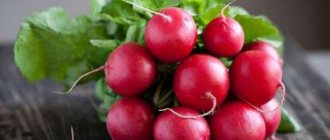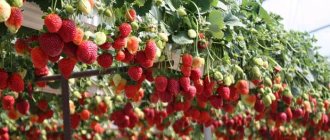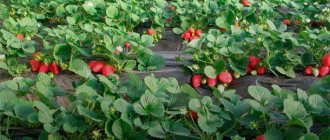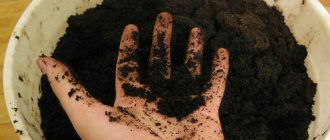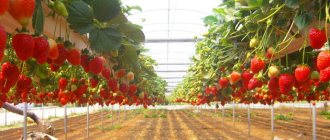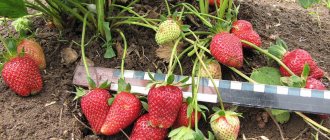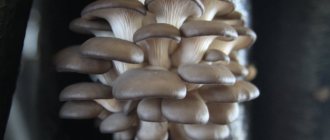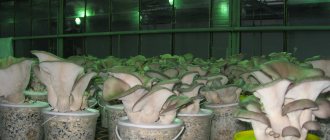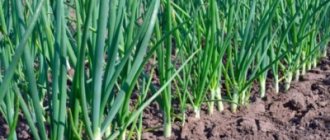Strawberries are considered a seasonal product, because they are harvested in open ground only in the summer. However, with some effort, you can grow this tasty and extremely healthy berry in winter. In this article we will look at what features should be taken into account when growing strawberries in winter, and how to prepare for such a business.
First of all, we will dwell in more detail on the selection of a suitable variety of strawberries, and will also pay attention to the arrangement of a greenhouse for the cultivation of this plant.
Growing strawberries in winter
Almost every summer resident who has a small greenhouse or greenhouse dreams of strawberry bushes bearing fruit all year round. Indeed, with some effort, any structure of closed ground will be able to provide you with a harvest.
It should be immediately warned that cultivating such a heat-loving plant in the cold season is associated with certain difficulties. But, if you choose the right strawberry variety and carefully prepare the greenhouse for growing it, difficulties will be minimized. When arranging the structure, the natural needs of the crop for nutrients, heat and moisture should be taken into account, so in closed ground you will need to try to reproduce natural conditions as much as possible.
Treatment of diseases
For the prevention of strawberry diseases, horsetail infusion is well suited.
The most common pathologies of homemade strawberries are gray rot and spider mites.
Fruits and leaves are affected by a specific coating. The leaves fall off, the berries become loose and tasteless.
To get rid of diseases you need to prepare a garlic solution. To do this you need:
- peel 2 cloves;
- crush them in a garlic press;
- pour boiling water, leave for 20–30 minutes.
After cooling, the infusion is filtered and used when spraying plants.
Selection of varieties for growing in winter
One of the key points in growing strawberries in winter is choosing the right variety. First of all, you should pay attention to the method of plant pollination, since there are no natural pollinating insects in the greenhouse. In addition, you need to choose a suitable variety based on yield volumes, disease resistance and basic planting requirements.
Figure 1. The best varieties for winter cultivation: 1 - Maria, 2 - Marmolada, 3 - Tristar, 4 - Sonata
When buying strawberries, be sure to ask what requirements this species makes for care, in particular, temperature and lighting, since the internal equipment of the greenhouse will depend on this.
Note: There are quite a lot of hybrid varieties on the modern market, which, although they are characterized by high yields, require special growing conditions. If you are not ready to spend extra money on installing a separate ventilation or lighting system, it is better to avoid such hybrids.
Among the best varieties intended for growing in a greenhouse in winter are species such as Maria, Marmolada, Tristar, Sonata, Mount Everest and others (Figure 1). All of them are distinguished by extremely high yields and the ability to re-form ovaries after the fruiting period has ended.
Yield increase
To increase the strawberry yield, you can use the technology of Dutch breeders. They grow strawberries in special berry containers, or in polyethylene or plastic bags. Such containers or bags are freely placed at different levels, thereby increasing the yield. In order not to waste time installing shelving or special structures, you can place bags with plants vertically. You can grow strawberries in bags on the balcony rather than in a greenhouse.
DIY vertical beds
To create one vertical bed you will need:
- 2 liter plastic bottle;
- reinforced film (at least 0.2 mm thick);
- thin tubes about 2 meters long - 4-5 pieces;
- purchased soil mixture or prepared substrate.
It is necessary to make a long sleeve with a bottom from the film, soldering the bottom and sides. The diameter of the sleeve must be at least 15 cm, the length depends on the height in the greenhouse. The sleeve is filled with soil, preferably nutritious, with organic fertilizers.
Holes or cross-shaped slits are made in the bag in a checkerboard pattern. There should be a gap of 20 centimeters between them. The top edge of the bag is tied with a rope to secure it. An irrigation system must be installed above each vertical bed. It consists of a bottle and several tubes.
The bottle needs to be placed on top of the bed, the tubes should be secured in it, lowering them down. Insert tubes into polyethylene every half meter to almost every bush. You need to make several small cuts in the bottle in advance so that the water comes out freely. After preparing the beds, you can begin planting.
Growing strawberries in winter in a greenhouse
From a technical point of view, winter growing strawberries in a greenhouse is considered difficult. Even if you have selected a suitable variety and studied in practice the features of cultivating a berry crop in open ground, this does not mean that growing it indoors will be successful.
Figure 2. Methods of growing in greenhouse structures
In fact, the whole idea of growing berries in the cold season comes down to the proper arrangement of the greenhouse. Strawberries are a heat-loving crop, which for successful fruiting requires not only a certain ambient temperature, but also an optimal level of humidity and high-quality lighting. Accordingly, you will have to equip the greenhouse with a ventilation and irrigation system, heating and lighting devices (Figure 2). To ensure that the preparation of the closed ground structure is successful, we will provide more detailed information on preparing the greenhouse for winter growing strawberries.
Setting up a greenhouse
If the greenhouse has been properly prepared for the cultivation of strawberries, the crop yield will be at a high level throughout the year. It should be borne in mind that the building itself must be reliable and solid, so light shelters and greenhouses are not suitable for this purpose.
Note: The most successful greenhouse is considered to be made of polycarbonate, which not only maintains the internal temperature well, but also transmits light well, and also effectively resists aggressive environmental factors.
In fact, you can use a greenhouse made of another material - glass or film, but you will definitely have to install equipment for heating, lighting and maintaining an optimal humidity level. Next, we will look at the main nuances of preparing such a closed ground structure.
Preparing soil and strawberries for planting
When preparing to grow strawberries in winter, you first need to properly prepare the soil. Since the humid microclimate of the greenhouse is favorable for the development of pathogenic microorganisms, before planting seedlings it is necessary to disinfect the soil with a one percent warm solution of ordinary potassium permanganate. You also need to fertilize the soil: add organic matter (peat, humus or rotted manure) to it at the rate of 4-5 kg per square meter of area, and add mineral fertilizers: potassium sulfate and superphosphate at 25 and 80 grams per square meter, respectively.
Note: In the process of directly planting seedlings in the soil, a special complex mineral fertilizer for strawberries is additionally added to the soil.
When the soil is ready, you can start preparing the planting material. It should be immediately clarified that it is necessary to grow strawberry seedlings for the greenhouse in advance, since the best results will be achieved when cultivating two-year-old plants.
When selecting and planting strawberry seedlings, the following nuances should be taken into account:
- It is better to choose self-pollinating remontant varieties of the so-called “short daylight hours”. Their advantage is that they do not need insects to form ovaries, and the crop can be harvested several times a year, and the formation of fruits does not depend on the length of daylight hours. These varieties include Pineapple, Temptation, Korona, Elizaveta and Sakhalin strawberries.
- If you were unable to grow full-fledged seedlings in time, it is better to buy them in specialized nurseries. This way you will be sure that the planting material fully complies with the characteristics of a certain variety and is of high quality.
- Planting strawberries in a greenhouse is carried out in the same way as in open ground. In this case, in the first year it is necessary to remove all the whiskers when harvesting the berries. This will help speed up the process of acclimatization of plants in a new place.
- It is possible to increase the planting of berry crops only from the second year. During this period from June to August, you can begin to select the strongest tendrils and root them next to the mother plants. It is important not to separate the rosette from the mother plant immediately after planting. To prevent the crop from dying, you need to wait until it is completely rooted and develops a strong root system.
If you do not have experience growing strawberries in open ground, use this advice: the bushes should be arranged in a checkerboard pattern. This means that the distance between plants in the same row should be approximately 15 cm, and between individual rows - about 25 cm. To speed up the rooting process and increase productivity, it is advisable to mulch all plantings with organic or non-woven material to increase the soil temperature.
Temperature, watering and lighting
In previous sections, we have already mentioned that maintaining optimal temperature conditions plays a key role in growing strawberries. Since seedlings are planted in a greenhouse in the summer or early autumn, the heating in the greenhouse begins to be turned on with the arrival of the first cold weather, and the temperature adjustment necessary for the start of fruiting begins only in January.
Note: If the greenhouse is cool, the strawberries will enter a period of vegetative dormancy, from which the crop can only be brought out by gradually increasing the temperature. It is important to consider that you should not sharply increase the temperature in the greenhouse, as this can negatively affect the condition of the plants.
Starting from mid-January, the indoor temperature is gradually increased to +8+12 degrees, and when solar activity becomes more intense, the temperature in the greenhouse during the day should reach +20 degrees, and at night - not lower than +8. As soon as the first flowers appear on the bushes, the temperature is further increased to +25 degrees. Without this event, the flowering of the plant will be delayed, and the ovaries and fruits will form more slowly.
Since strawberries are considered a moisture-loving crop, special attention should be paid to watering them:
- Moisture should be added to the soil regularly, since if there is a lack of moisture, the plants stop bearing fruit.
- When watering, you must ensure that the liquid only gets on the ground at the roots, and in no case on the leaves or stems, as this can provoke rotting processes.
- It is strictly forbidden to water strawberries in a greenhouse with cold water: the liquid should be moderately warm and correspond to the temperature of the soil around the bushes.
Figure 3. Methods of watering the crop
It should also be taken into account that as the strawberries grow, they will need more moisture, so over time the intensity of watering will have to be increased. The optimal way to add moisture to the soil is considered to be drip irrigation, which allows you to saturate the plants with water and use resources economically (Figure 3).
Note: Strawberries are demanding not only in terms of watering, but also in terms of air humidity. For example, during planting this figure should be 80%, and during flowering - 70%.
All plants need light to fully develop, and strawberries are no exception. Only in the presence of optimal lighting will the bushes bloom profusely and form ovaries. Since the duration of daylight hours and the intensity of sunlight are low in winter, additional lighting should be provided. As a rule, fluorescent lamps are used for this purpose, which are installed above the rows of plants. On average, strawberries need 8 hours of daylight for normal development, but for an earlier start of flowering and fruit formation, it is better to extend it to 10-16 hours.
Care
Making an irrigation system at home is quite simple. To do this you need to use a vessel with a hose. The diameter of the hose should be 1 centimeter.
Such a hose needs to be brought to each bush and watered the crop.
Lighting
For additional lighting, homemade lamps are used.
If the plant does not have enough light, you can use lamps. If you have a heater in your home, the growing process will only speed up.
The crop needs to be pollinated during the process of fruit formation.
Pollination
For pollination, use a soft brush or fan.
This can be done either manually or using a fan . In the second case, the stream is simply directed towards the pots. It is advisable to do this in the morning.
For the first method you will need a soft brush for painting. This is a rather painstaking process that takes time. But its effectiveness is very high.
Feeding strawberries
For feeding, it is convenient to use instant complex fertilizers.
Feeding the bushes should be carried out at least 2 times/30 days . For feeding, special fertilizers are used, which are sold in specialized boutiques. It is advisable to use a universal fertilizer.
Overfeeding should not be allowed. Otherwise, the leaves will receive all the vitamins, but the berries will never ripen.
Mustache care
During the active growth of strawberries, tendrils are formed. They need to be tied up. To do this, you should build a nylon mesh on the window.
With the help of tendrils you can propagate the crop and get new seedlings.
To propagate strawberries, you need to root a rosette. Then it is separated from the mother bush.
How to protect strawberries from frost for the winter
Proper covering of strawberries grown in open ground for the winter plays a key role in a successful harvest. This procedure is the final stage of preparing plants for winter.
Figure 5. Options for winter shelters
It is believed that the best and safest shelter for bushes is snow, so if your region has long and snowy winters, this will be enough to protect plants from frost. However, for regions with little snow in winters and low temperatures, artificial shelter is mandatory (Figure 5).
There are several ways to cover strawberries for the winter:
- Conifer branches: Young bushes that have recently been planted in the ground should be completely covered to protect the tender shoots from frostbite. Older plants can only be mulched around them.
- Tops, straw or leaves: These are also considered suitable and cheap cover options, however these materials have several significant disadvantages. For example, mice often live in straw, and leaves and tops become caked over several winter months and limit air circulation under the shelter. As a result, after the first thaw, strawberries may dry out. Alternatively, you can add brushwood or old raspberry stems under this mulch to improve air circulation.
- Non-woven covering material: for example, agrofibre or spandbond can be stretched over arcs and the strawberries can be left for the winter. Under such shelter, the bushes will feel absolutely comfortable, since the non-woven material allows air to pass through, but at the same time maintains the optimal temperature inside. It is impossible to cover strawberries with non-woven material without arcs, since frozen areas will form in places where it comes into contact with the soil.
Sowing seeds
Seeds are hardened before sowing to increase their germination.
Planting material is laid out on a damp cloth, the cloth is folded in half and placed in a bag. The package is left for 30 days on the top shelf of the refrigerator.
Step by step planting seeds:
- Take a shallow box and fill it 2/3 with soil, lightly moisten it.
- The seeds are laid out in rows.
- Sprinkle with a thin layer of earth.
- The box is covered with film or glass and left in a warm place.
- After the seedlings have germinated, the film is gradually removed and the container is transferred to a light windowsill.
- When 2 true leaves appear, they are picked into spacious pots.
Advice! At home, it is best to sow strawberry seeds for seedlings in early spring or from mid-August to the end of September.
How to feed strawberries for the winter
Despite the fact that in the fall the strawberries in the garden are preparing for the winter dormant period, they must be fed. This will help the plants successfully survive the cold and successfully enter the fruiting period next year.
To provide the crop with a supply of nutrients, it is necessary to add certain fertilizers to the soil. For this purpose, both organic and mineral substances can be used. For example, bird droppings or mullein should be diluted in water in a ratio of 1:10 and left for two days. Next, the resulting liquid is used for root watering, avoiding the substance getting on the leaves or stems.
Ordinary wood ash can also be used as a top dressing, and it does not need to be diluted in water: it will be enough to sprinkle it on the ground. About 150 grams of fertilizer are consumed per square meter of area. Similarly, you can fertilize with potassium and phosphorus.
How and when to prune strawberries for the winter
Proper pruning has a direct impact on future fruiting. Immediately after harvesting, the leaves are removed with a sharp knife or small pruning shears. In this case, it is important to observe moderation and cut only the leaf blade itself, without affecting the stems. This pruning technology is necessary in order not to accidentally touch the growth point, which will allow new shoots to form in the spring (Figure 6).
Figure 6. Pruning before the onset of cold weather
The antennae, which must be completely cut off, must also be removed. But it is not recommended to pull out weeds by the roots. It will be enough to cut off their above-ground part and leave the roots of weeds, which will serve as a kind of organic fertilizer in the next season. After pruning, the strawberry beds are watered abundantly, fed and covered for the winter.
The process of growing strawberries in winter is considered difficult, so for more information we recommend that you watch the video on this topic.

